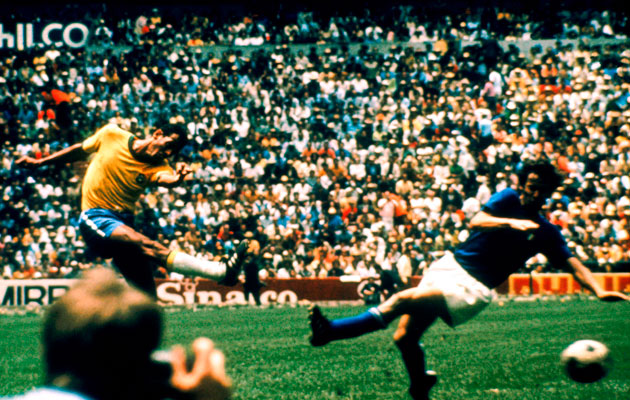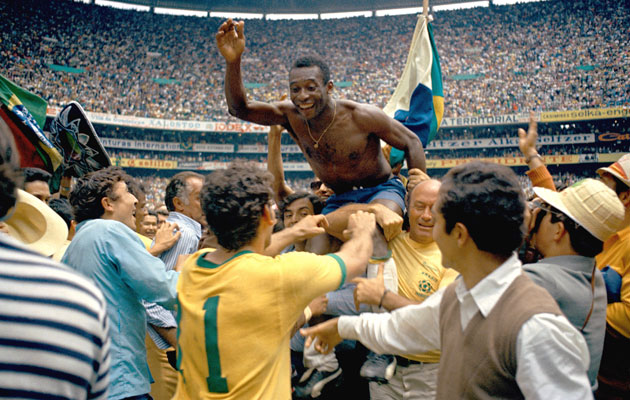The duplicitous exposure of experience between Brazilian and European minds demands regulation. One shall not assume that either eye perceives in the same manner, despite any apparent similarities they witness. Richard M. Morse, in an article titled ‘Brazilian Modernism’ from an edition The Hudson Review in 1950, testified toward this theory when discussing the sparse nature of thought between Brazil and Europe.
On the topic of Modernism as it was present in Brazil Morse notes that, ‘The special quality of Brazilian values…lies in the fact that Brazil never was nor will be at any ‘stage’ passed through by an ‘advanced’ nation.’
Advanced nations referred to those whom had already witnessed the influence of modernism. Morse remarks how Brazil ‘was never at the stage, as was Europe, of bearing and suckling the automobile, the stream of consciousness, and cubism. These elements arrived in Brazil full-blown, and from abroad.’
The incarnation of Modern Art Week (February 11th – 18th 1922) in the Brazilian city of Sao Paulo poised the figuration of a monument to Brazil’s treatment of materials new. Simultaneously it proposed a modernism the like of which Europe or America could not have foreseen. On this development Morse notes the contrast which had to occur in the development of Brazilian and European minds when faced with the complexities of progression.
For the American or European, their process had borne them steadily and completely away from the simpler patterns of life toward the more complex. For the Brazilian, due to the fully functional form of modernism they encountered, their minds were not eased toward complexity but immediately attuned to it. As Morse states; ‘Modernism, by which Brazilian artists mean their new self- and world-consciousness, blossomed overnight in Sao Paulo – as a specific fact, that is. It had begun incubating when the law academy and the old patriarchy ceased to produce ideals capable of coping with the times.’
Brazil’s appropriation of modernism to suit their needs illuminates clearer when one considers the global impact of another Brazilian appropriation. In this new regard Brazil did to Europe what European modernism had done to them – they gave their global audience exposure of the completed form.
While Modern Art Week of 1922 may have changed the face of artistic culture in Brazil, it was the 21st of June, 1970 and a few handpicked days which preceded it that demanded a change in an artistic culture once thought perfected in the western world.
Via what Europe came to recognize as ‘The Beautiful Game’, or what North Americans now call ‘Soccer’, in Brazil, as noted by Alex Bellos in his Brazilian Way of Life, it came to be called ‘futebol-arte’, or art football. June 1970, by now a fabled year of World Cup football in Mexico, allowed the wider world to understand what Brazil had done to football. In the nature of defining moments, what the Modern Art Week was to Brazilian Modernism, the World Cup of 1970 was to football; revolutionary. The manner in which Brazil dealt with the introduction of modernism demonstrated an ability to express something foreign in strictly domestic terms, to a degree of near perfection.
Gilberto Freyre, a renowned Brazilian social historian bore testimonial praise to what he had gained from America by means of great thinkers and doers. However the introduction of Modernism in Brazil would have to stimulate based on Brazilian themes and forms he believed. One such artistic development falls under the translated title of ‘green-and-yellowism’ – a technical homage to the national colours of Brazil. This basic foundation upon which the importance of nationality can flourish was used for the advancement of fascism and the adulation of history by the artistic endeavours of Plinio Salgado and Cassiano Ricardo respectively.

However, within the scope of global advancement it was these three distinct colours which would burn so deeply into the memory of those whom bore witness to Brazil in 1970, the first World Cup televised in colour. The ragingly high temperatures of Mexico in summer added a dimension of solidity to a playing surface that rarely rose. This kind of football was to be played with a consistency of presence for the unsullied yellow and blue of Brazilian jerseys as they exhibited a style rarely witnessed by a European audience.
Where once Brazilians had to bear witness to foreign complexities with no prior understanding, Europe would now observe football – a game seemingly simple in its process – demonstrated in a manner that their previous understanding of it could render no influence in their attempts to try and counter it.
The ubiquitous presence of Mario de Andrade on the scene of Brazilian modernism bore influence enough for Morse to deem him not the leader of modernism, rather ‘more than anyone else he was modernism.’ As opposed to being any direct link to a footballer, Andrade’s recorded thoughts and acts toward modernism ring true when one considers the collective thoughts of Brazilians on football. De Andrade, according to Morse knew that the quest for self- and world-consciousness that modernism thrived for had to be sourced from personal expression. De Andrade refuted the belief that such escape could be formulistic.
In footballing terms, prior to the World Cup of 1970, such an obvious adherence to personal ability harnessed within a collective effort had never been displayed with such success. Tactical nous seemed to take the back seat to honed ability. De Andrade’s importance in the modernist movement indicated a wider importance and appeal for the manner in which he felt success would thrive.
In this regard his attempts to restore faith in Brazil sourced itself from the similar actions of a poet like Ezra Pound on a more global level. Where Pound had gone to the likes of China to resurrect poetry that was for all intensive purposes unknown to the English tongue, De Andrade delved into Brazil’s local tradition and essence and attempted to present them in a means widely comprehensible to any Brazilian mind.
Cynics may determine such a wide ranging audience-elect as pandering on De Andrade’s part, however, the reality is far from so clear. Brazil’s amalgamation of various cultures meant De Andrade must pry into the ‘profuse folk arts of Portuguese, African and Amerindian’ origin to conjure any image of ‘Brazilianness’ as a state of self.
Such an amalgamation of ‘types’ to conjure one specific identity holds up strong in one specific display of footballing movement often dubbed as the Brazilian team of 1970s own construction of a monument to their own brilliance.
YouTube allows this moment to become constant but one wonders were it not so readily available through sight would its brilliance simply exist through the sound of retelling. Its importance, the reticence of which is tested when described in words showed a collection of individuals working a ball through an Italian side, famed for its defensive excellence, with such relative ease that its brilliance is almost its own undoing. The goal was the last to be scored in the World Cup of 1970 and what finer team to score against then the aforementioned Italy.
https://www.youtube.com/watch?v=M5HbmeNKino
For in the Modern Art Week of 1922, Morse noted how among all the displays of Brazilian identity which themed the week, the movement toward progression, the cries of ‘futurism’ were thought of with no more than sleazy notions of Italy – a cultural Shangri-la for Europe – if Italy was ever thought of at all. The Italian defence so primed for its final with Brazil in 1970 found that everything they knew about football had been altered and stopping Brazil, on that day at least was practically impossible.
If the ambition of modernist thinkers and doers in Brazil was to achieve a sense of self – and world – consciousness, then the footballing display of 1970 is as close to fulfilment as any artistic endeavour may hope to reach. As Alex Bellos noted, ‘Following football is perhaps the most efficient way to integrate into Brazilian society’.
When football becomes art it transcends mere participation and becomes something altogether more indicative of a nation’s emotional state. It is for this reason that conclusion must lie not on Brazil’s triumph noted above but rather with a moment which occurred twenty years before and to this day indicates a suffering that even the brilliance of 1970 could not compensate for. Bellos’ appreciation of how Brazil ‘meters out its recent history in World Cups, since it is during World Cups that Brazil feels most like a nation’ lays foundation for the thought that in 1950, when the World Cup was to be hosted by Brazil, a loss in the final to neighbouring Uruguay was, in the words of Brazilian anthropologist Roberto daMatta;
“…the greatest tragedy in contemporary Brazilian history. Because it happened collectively and brought a united vision of the loss and a historic opportunity. Because it happened at the beginning of a decade in which Brazil was looking to assert itself as a nation with a great future. The result was a tireless search for explications of, and blame for, the shameful defeat.”
Brazil presents football not as a hobby or a profession, not as a science or a sport but as a way of expression. In this regard, Brazil’s encounter with modernism can be seen as a movement toward rejuvenation; not merely within the natural reams of artistic endeavour but as a far reaching elaboration of the social psyche, masqueraded in the green and yellow which purports the vision of a united Brazilian identity composed of seemingly mutually exclusive strands of humanity.
By Arthur James O’Dea
This article originally appeared in In Bed with Maradona







